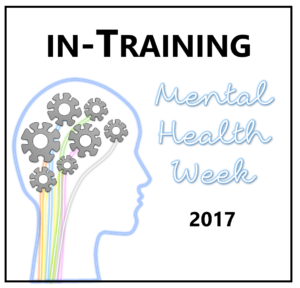This piece is part of in-Training Mental Health Week.
Growing up in an Asian-American immigrant household, I frequently encountered and grappled with my parents’ reserved manner of expressing themselves. Instead of using words to communicate their sadness or anger, my parents would barricade themselves in their room and refuse to say a word. At the time I did not understand that the difference in the way we expressed ourselves was highly influenced by our culture. Researchers have described this as an Asian “cultural value placed on the suppression or regulation of feelings” where the disclosure of feelings such as unhappiness or discontent is believed to be disruptive for the individual and one’s family. Strengthened by the fear of social stigma and personal shame, these cultural ideas often lead Asian Americans to become reluctant in seeking professional help.
When my maternal grandmother passed away, my mother spent a particularly long time in a stage of depression while grieving. Isolated from overseas friends and family members and refusing to burden my brother and me due to our youth, my mother locked her pain deep inside herself. While she tried to hide it, her pain was evident to me, manifesting itself outwardly through her thinning figure and her rapidly graying hair. When asked recently about her decision not to be evaluated and treated by a healthcare provider, she simply stated that she felt embarrassed having to turn to others for a problem she should have been able to deal with on her own.
My mother is not alone in her perspective and her actions. As a first-generation Asian American, I have developed a more outspoken nature than did my parents. Even though as a medical student I can grasp the importance of restoring and maintaining mental health in order to achieve overall well-being for patients, I nevertheless struggle with practicing what I preach. I experienced reservations in fully sharing personal anecdotes in the psychiatrist’s office, selectively filtering my thoughts to get my point across while using minimal description and the least emotionally charged words, lest I weigh my medical provider down with my own issues. I consciously avoided follow-up appointments despite my awareness of the benefits from the continuity of care.
The struggle for Asian Americans to pursue mental health-related services is not unique to the members of my immediate family. During our medical student visit to a local geriatric nursing center this past year, our faculty facilitator discussed the relative lack of Asian Americans in that site’s patient population. The cultural norm is such that families tend to take care of their own seniors within their own homes. Consequently, senior Asian Americans are even less likely to receive professional psychiatric and medical care.
Like an infectious agent, this cultural influence disseminates throughout the entire Asian American community. Asian Americans have been reported to have lower utilization of mental health resources than the general population and the lowest utilization among ethnic populations. Asian Americans also experience lower satisfaction with the health services they receive. In the face of this mental health disparity, as future healthcare leaders, we must challenge ourselves to bridge that gap. How can we work towards that?
Here are some ideas.
Reduce stigma using the following three approaches: 1) protest, 2) educate and 3) contact. By protesting via public demonstrations, we can send a message to the media about the need for accurate representations of mental illness, thereby influencing how mental illness is portrayed in society. Finding opportunities to educate the public, our patients and their families will enable us to dispel any misconstrued notions. Encouraging more contact with people with mental illnesses allows the public to improve their attitudes and behaviors towards this patient population.
Include family members in the treatment plan whenever possible to improve treatment adherence and to provide social support for Asian American patients. Given the interdependent nature of Asian culture, instilling these values into the therapeutic plan can help reduce the mental health disparity in this patient population, demonstrate cultural sensitivity and strengthen the patient-physician relationship.
In conclusion, mental health disparities definitely exist in the Asian American community. Shrouded by a curtain of cultural influences and stigma, patients from this population may not necessarily openly discuss their emotions in the medical office setting. Though emotional regulation and suppression is prevalent among Asian Americans as a collective, it is important to realize that this community is in fact composed of a diverse set of ethnicities. As such, each subgroup of individuals may interpret these values to have slightly different meanings and incorporate them in dissimilar ways into their lives. Keep a keen eye out to identify any physical or behavioral manifestations of mental illness. But understand that what may appear to be a pattern indicative of mental health issues in one ethnic subgroup may not be the same for another ethnic subgroup in the Asian American community. By staying aware of Asian cultural influences and actively changing the culture around mental health, we can take a step towards achieving better health outcomes for our Asian American patients.

